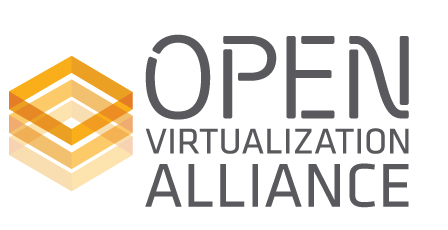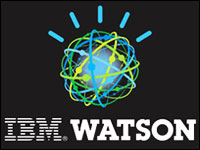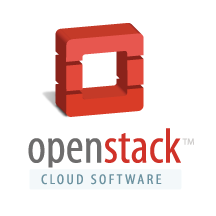Editor’s Note: This is a guest blog post by Adam Jollans, Program Director of Linux and Open Virtualization Strategy at IBM.
Open computing has been steadily growing in enterprise acceptance and, in 2013, that trend accelerated sharply. Many factors contributed to the upward trajectory of open computing in the last year. However, there were three notable developments that, in retrospect, were the critical game-changers.
Here’s a look at the three key developments in open source in 2013:
KVM Momentum
At LinuxCon/CloudOpen Europe in October, it was announced that the Open Virtualization Alliance (OVA) would become a Collaborative Project under The Linux Foundation. The OVA was originally founded in May 2011 to help advance adoption of the Kernel-based Virtual Machine (KVM) hypervisor by providing education, best practices and nurturing a vibrant ecosystem around open virtualization. Today, hundreds of companies from all over the globe are members of the OVA – it is these members that will continue to contribute to and guide the OVA as a Collaborative Project at The Linux Foundation. KVM will also benefit from access to a wider ecosystem and synergy with Linux Foundation events and marketing activities.
 Open virtualization with KVM offers a high degree of scalability. In fact, KVM holds the top results in both SPECvirt_sc2010 and SPECvirt_sc2013 benchmarks. In addition, KVM provides strong enterprise level security as a result of SELinux, which enables it to provide Mandatory Access Control and enforced isolation of virtual machines. A core component of the Linux kernel, KVM has gained wide acceptance. According to a recent IDC white paper, cloud providers are embracing KVM. Many prominent public clouds have been built on KVM, including the Google Compute Engine, HP Cloud, and IBM SmartCloud Enterprise.
Open virtualization with KVM offers a high degree of scalability. In fact, KVM holds the top results in both SPECvirt_sc2010 and SPECvirt_sc2013 benchmarks. In addition, KVM provides strong enterprise level security as a result of SELinux, which enables it to provide Mandatory Access Control and enforced isolation of virtual machines. A core component of the Linux kernel, KVM has gained wide acceptance. According to a recent IDC white paper, cloud providers are embracing KVM. Many prominent public clouds have been built on KVM, including the Google Compute Engine, HP Cloud, and IBM SmartCloud Enterprise.
As Jim Wasko, Director, IBM Linux Technology Center, pointed out in his keynote at SUSECon 2013, new applications – including big data, cloud, social and mobile – are placing greater demands on organizations’ IT infrastructures. Linux and other open technologies are critical to solving these challenges because they can provide agility, interoperability, and choice. Now that the OVA is a Collaborative Project under The Linux Foundation, KVM can be expected to extend its reach in the enterprise and get its open message out to many more users and partners.
Linux on Power
In September, IBM revealed its plans to invest $1 billion in new Linux and open source technologies for IBM’s Power Systems servers. This investment, which will be made over the next 5 years, is aimed at helping clients capitalize on big data and cloud computing with modern systems that can handle the new wave of applications emerging in the post-PC era.
![]()
 The new pledge echoed IBM’s announcement more than 13 years ago that it would invest $1 billion in the Linux movement. Today, Linux is accepted and trusted within the majority of enterprise server environments, according to a study commissioned by enterprise Linux provider SUSE. Eighty-three percent of respondents said they are now running Linux in their server environments, and more than 40% are using Linux as either their primary server operating system or as one of their top server platforms.
The new pledge echoed IBM’s announcement more than 13 years ago that it would invest $1 billion in the Linux movement. Today, Linux is accepted and trusted within the majority of enterprise server environments, according to a study commissioned by enterprise Linux provider SUSE. Eighty-three percent of respondents said they are now running Linux in their server environments, and more than 40% are using Linux as either their primary server operating system or as one of their top server platforms.
 New workloads like analytics and big data require powerful processors with multiple threads and high memory bandwidth. Building IBM’s Jeopardy!-winning cognitive computing solution Watson on Linux on POWER Systems, for example, has enabled IBM customers to run workload-optimized systems for everything from complex analytics to high performance computing in fields like Healthcare, Customer Service, and Finance.
New workloads like analytics and big data require powerful processors with multiple threads and high memory bandwidth. Building IBM’s Jeopardy!-winning cognitive computing solution Watson on Linux on POWER Systems, for example, has enabled IBM customers to run workload-optimized systems for everything from complex analytics to high performance computing in fields like Healthcare, Customer Service, and Finance.
We at IBM think there is a big opportunity for customers to benefit from open solutions on Linux on Power. The new $1 billion investment will make that possible – just as the similar investment in the early days helped propel Linux into the enterprise.
OpenStack
To ensure that innovation in cloud computing is not hampered by locking businesses into proprietary islands of insecure and difficult-to-manage offerings, in early 2013, IBM said that all of its cloud services and software will be based on an open cloud architecture supporting industry-wide open standards for cloud computing.
As its first step, IBM unveiled new private cloud offerings based on the open source OpenStack software. IBM SmartCloud Entry and IBM SmartCloud Provisioning speed and simplify managing an enterprise-grade cloud so that, for the first time, businesses have a core set of open  source-based technologies to build enterprise-class cloud services that can be ported across hybrid cloud environments. The OpenStack Project, an open source cloud platform, effectively provides the operating system for cloud, enabling the basis for interoperability and choice in terms of moving workloads from, to and between clouds, including public and private clouds.
source-based technologies to build enterprise-class cloud services that can be ported across hybrid cloud environments. The OpenStack Project, an open source cloud platform, effectively provides the operating system for cloud, enabling the basis for interoperability and choice in terms of moving workloads from, to and between clouds, including public and private clouds.
The majority of enterprise IT decision makers that responded to a recent Red Hat survey indicated that OpenStack is part of their organization’s future cloud infrastructure plans. The “2013 Path to an OpenStack-Powered Cloud” survey of 200 U.S. enterprise decision makers, commissioned by Red Hat through IDG Connect, found that internal development of private cloud platforms has left organizations with a host of challenges to address, including resource management, IT management; application management; and application migration. According to the survey results, as organizations seek to address these issues, they are moving or planning a move to OpenStack for private cloud initiatives. And, not quite surprising, a recent OpenStack User Survey indicated that 62% of OpenStack deployments use KVM as the hypervisor of choice.
The Open Path Forward
Taken together, the OVA becoming part of The Linux Foundation, IBM’s $1 billion commitment to Linux on Power, and growing industry support for the Open Stack-supported open cloud,  were the key developments that moved open technologies deeper into the enterprise. These developments will also form the foundation for further open source expansion in 2014.
were the key developments that moved open technologies deeper into the enterprise. These developments will also form the foundation for further open source expansion in 2014.
Adam Jollans is currently leading the worldwide cross-IBM Linux and open virtualization strategy for IBM. In this role he is responsible for developing and communicating the strategy for IBM’s Linux and KVM activities across IBM, including systems, software and services.
He is based in Hursley, England, following a two-year assignment to Somers, NY where he led the worldwide Linux marketing strategy for IBM Software Group. He has been involved with Linux since 1998, and prior to his U.S. assignment he led the European marketing activities for IBM Software on Linux.
Source: Linux